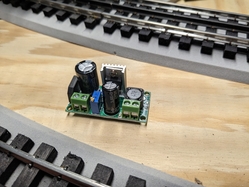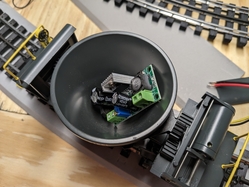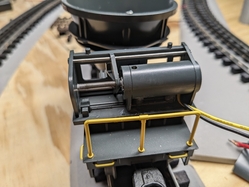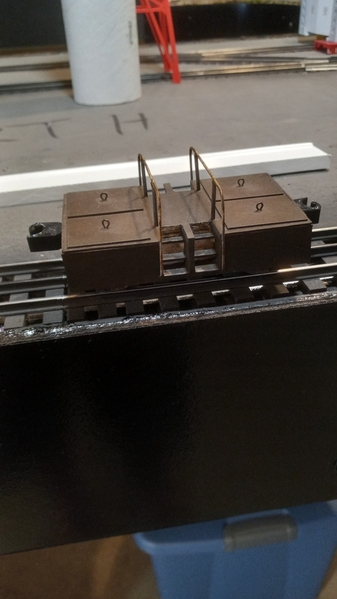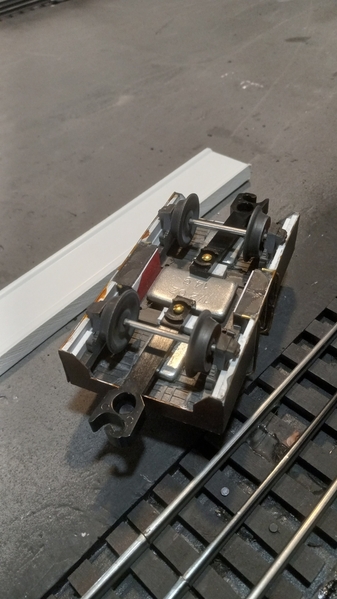@Steve Tyler are you saying the pulses of DC would land between the peaks of AC? I always wandered how that worked on my conventional sets. It would be perfect in this case. I have to wonder if I could literally just use the whistle and bell buttons?
Well, sorta-kinda, but if you were to display the ordinary sine wave of AC power (half above and half below the zero line) on a 'scope and apply a DC offset voltage, the mid-point of the displayed voltage (and in fact, *every* point of the wave!) would shift up or down, depending on the polarity. In other words, you'd see the same sine wave on the oscilloscope, but just moved up or down the amount of the DC voltage imposed, and on average the combined voltage would be plus (or minus) the offset voltage.
To be honest, I'm not entirely clear how the DC offset gets untangled from the base AC voltage (my old-school brain says to use a choke/inductor between the track voltage and the DC motor, in order to block the AC voltage but let the DC through, but I haven't a clue as to what value to suggest), but I suspect whatever worked for the bell and whistle in a tender might work as well here (or even easier, since rather than having to use rectifiers to power only one of the two devices (bell and whistle), a reversal of voltage to the one device would just spin it in reverse, exactly as desired), or there might be some better/easier way using contemporary components. In any event, yes, I do believe you should be able to use that DC voltage offset to alternately dump or restore the bucket on your slag car.







